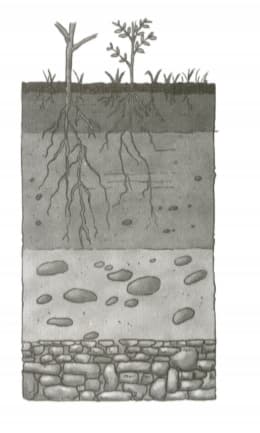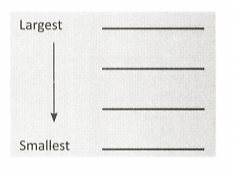Malini Sheshdari Solutions for Chapter: Soil, Exercise 2: STEP UP
Malini Sheshdari Science Solutions for Exercise - Malini Sheshdari Solutions for Chapter: Soil, Exercise 2: STEP UP
Attempt the practice questions on Chapter 9: Soil, Exercise 2: STEP UP with hints and solutions to strengthen your understanding. CONCERT Science 7 solutions are prepared by Experienced Embibe Experts.
Questions from Malini Sheshdari Solutions for Chapter: Soil, Exercise 2: STEP UP with Hints & Solutions
Name the layer of soil down to which water can penetrate.

In which layer (horizon) are you most likely to find small insects and worms?

In the box, rank these components of soil according to the size of the particles, from largest to smallest:

Sand
Clay
gravel
silt
In which of the following areas is the ground likely to dry up the fastest after a shower of rain? Give reasons for your answer.
The water table is the depth at which water can be found underground at a particular place. Name three factors that would affect the water table. (Hint: Think of where water comes from, how it reaches underground and how it is used).
A sample of soil is taken in a funnel lined with filter paper. The funnel is placed over a measuring cylinder. At , Parveen starts to pour of water slowly on the soil. She finishes pouring all the water at . Given here are the readings of water levels in the measuring cylinder at different times. Look at the table and answer the question.
| Time | Water level in the cylinder |
How much water (in ) was absorbed by the soil?
A sample of soil is taken in a funnel lined with filter paper. The funnel is placed over a measuring cylinder. At , Parveen starts to pour of water slowly on the soil. She finishes pouring all the water at . Given here are the readings of water levels in the measuring cylinder at different times. Look at the table and answer the question.
| Time | Water level in the cylinder |
What is the percolation rate? Give your answer in .
A sample of soil is taken in a funnel lined with filter paper. The funnel is placed over a measuring cylinder. At , Parveen starts to pour of water slowly on the soil. She finishes pouring all the water at . Given here are the readings of water levels in the measuring cylinder at different times. Look at the table and answer the question.
| Time | Water level in the cylinder |
What type of soil is the sample most likely to be: sandy soil, clayey soil or loamy soil? Give reasons for your answer.
